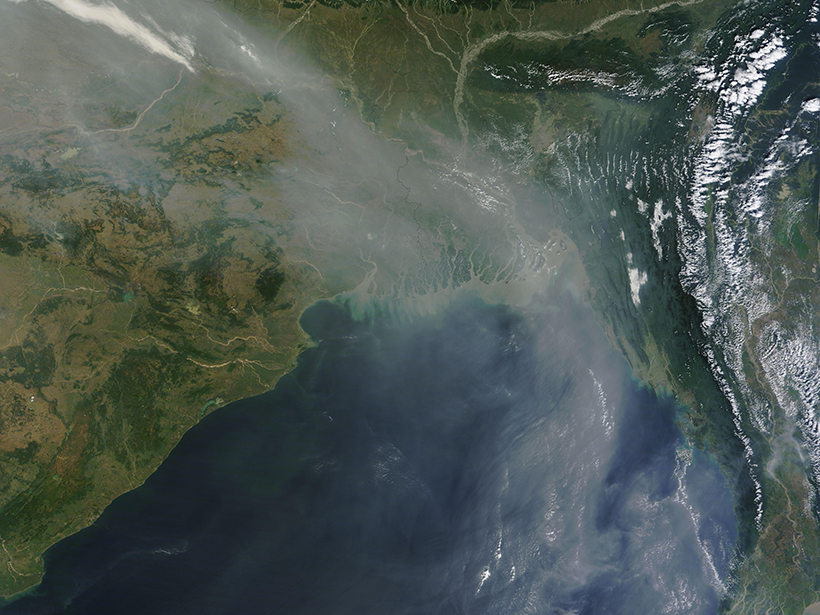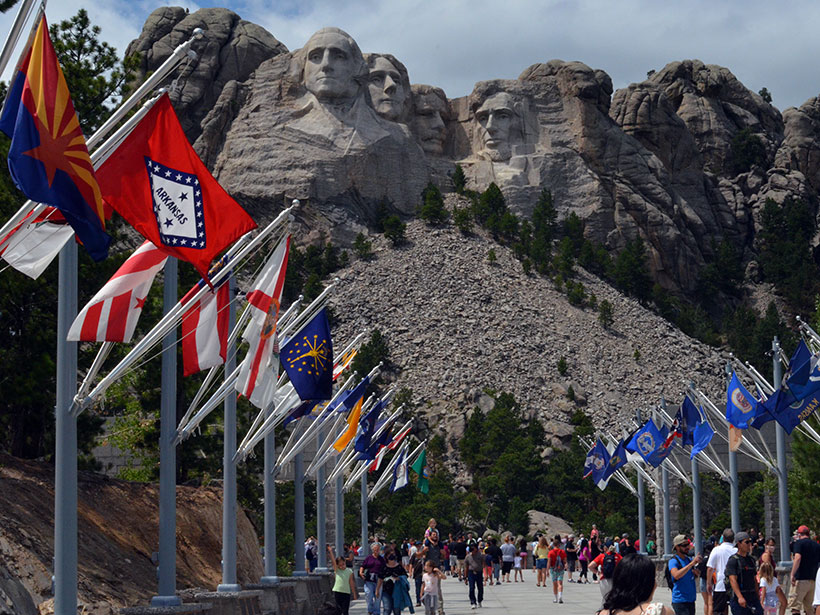In a classic detective story, clues from data new and old helped researchers reveal the puzzling chain of tectonic events that followed the Early Cretaceous split between India and Antarctica.
Features
From Lava to Water: A New Era at Kīlauea
At Kīlauea Volcano, scientists are using unoccupied aircraft to monitor the new water lake, a possible harbinger of explosive activity, that formed after the volcano’s 2018 eruption.
Critical Zone Science Comes of Age
The developing field, which unites Earth scientists to examine the planet’s surface as a single, unified entity, is unraveling the complex, interconnected processes that support life on Earth.
The River’s Lizard Tail: Braiding Indigenous Knowledges with Geomorphology
Indigenous Knowledges can be accurate, rigorous, and precise, say researchers in New Zealand, and they can help geomorphologists see landscapes in a new, richer way.
Mount Rushmore’s Six Grandfathers and Four Presidents
Living in Geologic Time: How long will it take for erosion to erase Mount Rushmore?
The Challenges of Fieldwork for LGBTQ+ Geoscientists
A new survey reveals the unique issues that traveling for research poses for LGBTQ+ scientists. The data should help us create solutions that foster safety and inclusion.
Rayos Planetarios: Misma Física, Mundos Distantes
Un rayo en el planeta Tierra necesita sólo algunos simples ingredientes para generar una chispa. Esos ingredientes existen en todo el sistema solar y más allá.
Accessibility and Fieldwork in the Time of Coronavirus
Fieldwork in the geosciences is increasingly relying on groundwork laid by accessibility advocates.
The Delicacy of Arches
Living in Geologic Time: How long will Utah’s arches grace the red rock desert?
Preparing for a Handoff
Scientists with Interstellar Probe, a proposed 50-year flight to interstellar space, are pondering how to plan and carry out a multigenerational mission.










